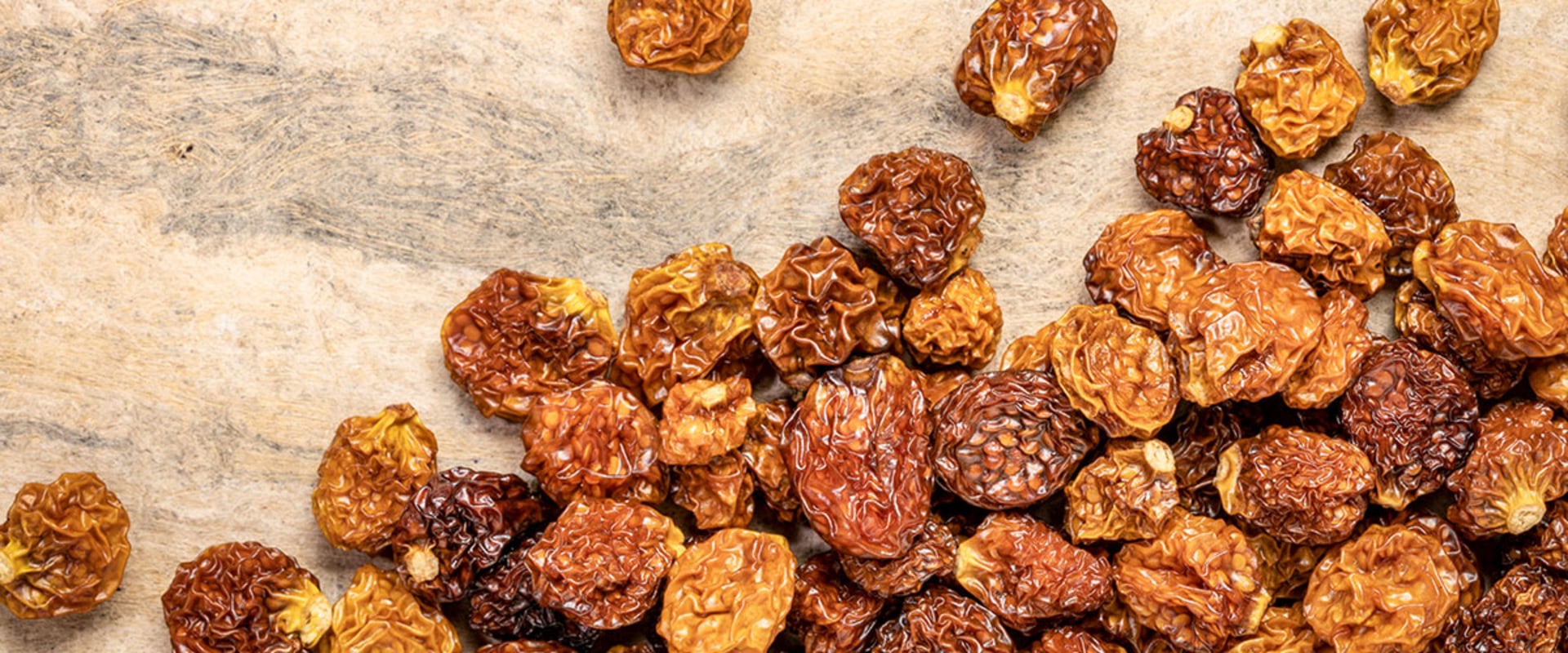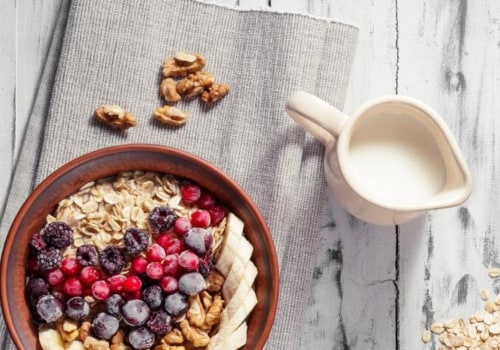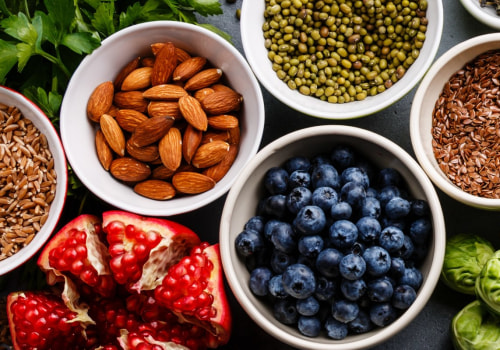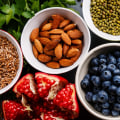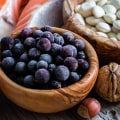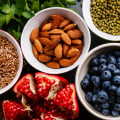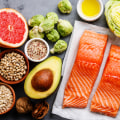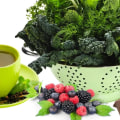Access more than 30 brands, premium videos, exclusive content, events, maps and much more. Eating healthy is about maximizing your intake of nutrients while eating delicious meals made with natural and healthy ingredients. So what better way to achieve that goal than to stock your kitchen with a variety of superfoods packed with healing and health-promoting benefits? To help you do just that, for the first time in history, Clean Eating has selected the 20 most powerful superfoods you have at your disposal right now that are packed with good-for-you nutrients. Of course, choosing just 20 superfoods forced us to make some difficult decisions about what to include.
Our judgment when evaluating foods was that they should be extremely rich in healing nutrients, generally low in calories and offer significant antioxidant and anti-inflammatory benefits. In traditional Chinese medicine (TCM), beetroot is believed to be a natural liver tonic and blood purifier. However, the benefits of beetroot are not limited to Eastern traditions. Betaine, a substance found in beetroot, supports overall liver function and helps the liver process fats.
Beetroot is also an excellent source of folate, or vitamin B9, a nutrient (along with betaine) that helps balance body levels of homocysteine, an amino acid that, when elevated, can increase the risk of heart disease. In fact, beets have a double effect on health, as the leaves are also rich in nutrients, especially in calcium for bone formation and iron to prevent anemia, as well as in antioxidant vitamins A and C. Roast the beets with just a drizzle of balsamic vinegar for use in salads or as a side dish. They're also surprisingly good when served raw, thinly sliced or in a spiral shape over salads.
Pickled beets are also a great addition to sandwiches, wraps, and burgers. And don't forget to use beet leaves as well; use them as you would with any other vegetable, such as in salads, stir-fries or stir-fries. In addition to the classic uses of basil, such as in pesto, mixed with pasta or as a topping for pizza, basil is an interesting addition to any berry-based smoothie, especially when combined with blueberries or strawberries. Cauliflower is a member of the Brassicaceae or cabbage family and, as such, contains many of the compounds that give this vegetable family its well-deserved reputation as powerful cancer fighters.
Cauliflower contains sulforaphane, which acts as an antioxidant and stimulator of the body's natural detoxifying enzymes. When sulforaphane enters the bloodstream, it activates the body's antioxidant defense systems and activates liver enzymes that help eliminate cancer molecules from cells. Sulforaphane is thought to be partly responsible for the decreased risk of cancer associated with the consumption of cauliflower and other cruciferous vegetables, such as cabbage, broccoli and Brussels sprouts. Cauliflower can be a great low-carb substitute for rice (as shown here; see recipe below for instructions) in dishes such as fried rice.
Alternatively, steam the cauliflower with garlic and then puree it with goat cheese to swap it out delicious for mashed potatoes. Turmeric is one of the spices that gives Indian curry its distinctive flavor and tone. This unique spice is part of the ancient healing systems of India, China and the Polynesian Islands, and occupies a place of distinction in both Ayurvedic (Indian) and Chinese medicine. Believed to be a powerful anti-inflammatory, one of the traditional uses of turmeric has been for the treatment of arthritis.
While turmeric contains a whole family of active compounds, the one most responsible for the medicinal effect of turmeric is curcumin. Although more human clinical trials are needed, curcumin has shown promise in slowing the growth of some types of cancer (including pancreatic and colon) because it can help fight cancer cells by reducing the number or size of tumors. Turmeric is perfect in a relaxing tea. Simply mix 1 to 2 teaspoons of ground spices in a cup of boiling water with slices of fresh ginger and a teaspoon of honey.
The spice is also a welcome addition to curries and stir-fries. Miso is a naturally fermented, enzyme-rich soy product that has been a pillar of Japanese cuisine for centuries. It's made by mixing cooked soybeans with salt and a leavening agent called koji. Miso has a high antioxidant activity, stimulates the secretion of digestive fluids and can have a protective effect against chemicals and radiation due to the presence of dipicolinic acid, a substance that binds to heavy metals and can help the body excrete them.
Miso is almost always eaten as a soup with other health-promoting ingredients, such as seaweed, which has made it difficult to research the effects of miso as an isolated ingredient on health. Despite being high in sodium (1 teaspoon normally contains 200 to 300 milligrams), miso consumption has been shown to be correlated with a lower risk of cardiovascular disease. Some researchers speculate that this cardioprotective effect may be due to peptides (the building blocks of proteins) found in fermented soybeans. Because of the fermentation process, miso is also a source of probiotics, or beneficial gut bacteria, which can help improve digestion and bloating.
Look for miso brands that say “unpasteurized” on the label, as heat during pasteurization can destroy these fragile microorganisms. Mix miso with Asian-style vinaigrettes and sauces for a touch of umami flavor. Mix with sesame oil, mirin and condiments and a touch of sweetener and spread on grilled or roasted vegetables. Because probiotics are sensitive to heat, the less the miso is heated, the more benefits it produces.
Butternut squash is a vitamin A giant, containing a whopping 1,144 micrograms per cooked cup, far exceeding the recommended daily value (DV) of this protective vitamin for men and women. Nutmeg is unique among winter squash because it contains a substantial amount of beta-cryptoxanthin, a carotenoid that may reduce the risk of developing lung cancer. And some research indicates that exposure to carcinogens in cigarettes, either directly or second-hand, can induce a vitamin A deficiency. Chop the butternut squash into “French fries” and bake with the spices of your choice.
Puree cooked pumpkin and mix it with chili for added nutrition, or use pumpkin puree for baking as an alternative to canned pumpkin. Walnuts contain the highest amount of alpha-linolenic acid (ALA) of all nuts, the plant-based omega-3 fatty acid. In addition to the remarkable properties of omega-3 for the heart, such as helping to reduce triglycerides and reduce plaque formation in blood vessels, this essential fatty acid also helps your group of experts. Omega-3s help facilitate the movement of wellness neurotransmitters (dopamine and serotonin) in and out of cells, while promoting memory and problem solving.
If that's not enough, walnuts could also help you stay in shape. According to experts at Loma Linda University, eating four to six halves of nuts before meals helps reduce appetite and may cause people to eat less at mealtimes. Walnuts are a beautiful topping for shrimp and the same recipe can also be used on baked chicken. Alternatively, mix raw or roasted nuts into green salads, tuna salads, oatmeal and nut mix.
Chia seeds were virtually unknown in North America until American researchers began to obtain and use chia as an alternative crop for Argentine farmers. One of the researchers, Wayne Coates, a research professor who began studying chia more than 20 years ago, became an advocate for seeds and began selling them commercially in North America. Chia was also in the spotlight during the 1980s and 1990s, when chia pets were all the rage, but the seed itself wasn't widely available in grocery stores. Chia and chia-based foods and beverages appeared on store shelves several years ago, as more and more nutrition experts announced their nutritional benefits and consumer demand soared.
While human studies are limited, anecdotal evidence suggests that eating chia seeds may increase energy, stabilize blood sugar, and aid digestion. This is partly due to the high fiber content of the seeds: 1 ounce (just under 3 tablespoons) has 11 grams, almost half of the daily fiber requirement for adults. Chia seeds also contain a good amount of calcium, magnesium and potassium, and offer 30% of the daily value (DV) of manganese, an important mineral for bone health. When buying chia, remember that both white and black seeds are good options.
But avoid red (immature), brown, or black seeds that are smaller than regular chia seeds, as they are weed seeds. Chia seeds make a great protein-packed breakfast pudding. Simply mix 1 tablespoon of chia seeds with 1 cup of almond milk and a pinch of cinnamon. Let the mixture thicken overnight and serve it with fresh fruit.
Musard greens, which favor the liver, have unique compounds that help strengthen the body's ability to detoxify and help prevent the development of cancer cells. The powerful antioxidants in mustard greens help stimulate what is known as phase 1 detoxification (the first step in the liver detoxification process), while providing sulfur-rich nutrients to stimulate the second phase of liver detoxification. These strong-tasting vegetables are also a great source of vitamins A, C and E, and a blend of anti-inflammatory phytonutrients such as quercetin. They also rank high on the list of vegetables rich in vitamin K, an important nutrient that helps regulate the body's inflammatory response, maintains calcium in the bones, and is essential for healthy blood flow and clotting.
Did we mention that mustard greens taste absolutely incredible? It's not uncommon to hear about the benefits of dark chocolate, but you don't often hear about dark chocolate's least processed relative, cacao beans. Cocoa beans are pure cacao beans from the fruit of the cacao tree that are harvested, fermented and dried, then peeled and broken into pieces. Keep in mind that cacao beans that are cleaned, roasted, and processed after drying are classified as cacao, which is the most processed form of cacao. A study published in the Journal of the American College of Cardiology showed that women with the highest weekly chocolate intake (45 grams or more) had a lower incidence of stroke compared to women who consumed the least amount of chocolate.
These flavanols are also known to help lower blood pressure and act as anti-inflammatory and vasodilators, meaning they open up blood vessels and arteries in the body. According to a study published in The BMJ, higher levels of chocolate consumption are associated with a huge 37% reduction in the risk of cardiometabolic problems, such as diabetes and heart disease. Where cacao beans differ from dark chocolate is in their fiber content: the seeds contain much more, about 9 grams per ounce. Cocoa beans also contain a natural chemical called phenylethylamine, which accelerates the body's pulse, making you feel more alert and focused.
One of the most popular superfoods are blueberries, which are acclaimed to be full of vitamins and fiber. It also contains flavonoids, a group of phytonutrients that reduce the risk of heart problems among young women. Aren't there blueberries in the supermarket? While blueberries are the most hyped superfood, other types of berries are also nutritionally dense, so don't think twice about opting for acai, strawberries, raspberries, grapes, or any other type you prefer. Another fruit that is hailed as a superfood is avocado.
Avocados are not only a tasty dish or side dish, but they have also been found to significantly lower LDL cholesterol and triglycerides. With so many fruit benefits, it's no wonder it's gaining popularity. Next time you see a grenade at the farmer's market, buy a pair. Overall, dark green vegetables top any list of superfoods, and kale is one of the most exceptional vegetables in the kitchen.
Julie Morris, who wrote Superfood Smoothies, told Time that cooked kale provides more iron per ounce than beef. It has a great nutritional contribution, since one cup of raw kale provides 684% of the vitamin K you need every day, 206% of vitamin A and 134% of vitamin C. Among other nutrients, it also has a good amount of calcium and potassium, while having very few calories, carbohydrates and fats. Like other types of seafood, this delicious fish has plenty of omega-3 fatty acids, which can help reduce inflammation that could lead to heart attacks and strokes.
Salmon is a very heart-healthy dish that reduces blood pressure, triglyceride levels and blood clotting. Eat at least two servings of fish with high levels of omega-3 fatty acids, as this seems to reduce the likelihood of heart disease. In addition, salmon is rich in vitamin D, which is linked to a reduction in the risk of colon and breast cancer. A bowl of oatmeal for breakfast is a great way to start the day.
Oats are high in fiber, specifically beta-glucan, which is known to be very effective in keeping blood sugar levels under control. This makes oats an excellent healthy food option to reduce the risk of diabetes. It has also been found to reduce the risk of heart disease and stroke. Your Super makes it easy to get the benefits of several superfoods at once with its range of powdered superfoods blended to address specific health and wellness issues.
For example, Forever Beautiful aims to nourish the skin with chia seeds, blueberries, acai berries, maqui berries, acerola and maca, while Muscle Power is designed to build lean muscle with rice protein, pea protein, maca, lucuma and banana. Part of what makes DGLVs so great is their potential to reduce the risk of chronic diseases, such as heart disease and type 2 diabetes (1,. Berries are an inexhaustible source of vitamins, minerals, fiber and antioxidants. The strong antioxidant capacity of berries is associated with a reduced risk of heart disease, cancer and other inflammatory conditions (4,.
Berries may also be effective in treating various digestive and immune disorders when used in conjunction with traditional medical therapies (. Whether you enjoy them as part of breakfast, as a dessert, in a salad or in a smoothie, the health benefits of berries are as versatile as their culinary applications. Berries are full of nutrients and antioxidants that can prevent certain diseases and improve digestion. Despite fears related to egg consumption and high cholesterol, research indicates that eating 6 to 12 eggs a week does not significantly increase the risk of heart disease or diabetes (1).
Research indicates that they offer many health benefits, such as better management of type 2 diabetes and a reduction in blood pressure and cholesterol (1). Interestingly, although nuts and seeds are calorie-dense, some types of nuts are linked to weight loss when included in a balanced diet (18, 19, 20). Fermented, probiotic-rich foods, such as kefir, have several associated health benefits, such as lowering cholesterol, lowering blood pressure, improving digestion and having anti-inflammatory effects (21, 22, 2). Research indicates that garlic may be effective in reducing cholesterol and blood pressure, as well as in boosting immune function (2).
In addition, sulfur-containing compounds in garlic may even play a role in preventing certain types of cancer (2). Adding olive oil to your diet may reduce inflammation and the risk of certain diseases. such as heart disease and diabetes (26, 27, 2.Ginger may be effective in controlling nausea and reducing pain caused by acute and chronic inflammatory conditions (29, 30, 3). It can also reduce the risk of chronic diseases such as heart disease, dementia and certain types of cancer (32, 33, 3).
Despite their sweet taste, sweet potatoes don't raise blood sugar as much as you might expect. Interestingly, they may actually improve blood sugar control in people with type 2 diabetes (4). Berries are among the healthiest and most nutritious foods in the world. Here are 11 ways eating berries can improve your health.
Spirulina is one of the most nutrient-rich foods in the world. It contains more than 100 different nutrients. Spirulina is loaded with vitamins, minerals and fiber. Spirulina has a wide variety of antioxidants, including beta-carotene, phycocyanins, phenolic compounds, and superoxide dismutase (SOD).
Spirulina is also one of the few plant foods that contain complete proteins. In fact, spirulina has approximately 60 percent protein by weight. Spirulina also contains healthy fats, such as DHA, EPA and gamma-linoleic acid (GLA). It's very likely that you haven't heard of Mankai, also known as the smallest vegetable in the world.
I'm sure I didn't know anything about this little superfood until Samina Kalloo, RDN, CDN, director of nutritional communication at Pollock Communications, gave me an idea of its power to store proteins and vitamins. Despite its small size, Mankai has all nine essential amino acids, vitamin B, iron and more than 60 nutrients, Kalloo says. You and your SO,. Turmeric, a spice you probably already have in your closet, can reduce inflammation, improve memory, reduce the risk of some chronic diseases and combat free radicals (also known as those that contribute to aging), Kalloo says.
You might be familiar with tahini if your nighttime cravings include hummus and pita chips. Tahini, a main ingredient in hummus made from ground sesame seeds, originates in the Middle East, but has made its way into the aisles of Trader Joe's and Whole Foods. It can be a little disconcerting to figure out what exactly to do with pomegranates or seeds. But its health benefits definitely outweigh any lingering confusion you may have.
As an inexhaustible source of antioxidants, pomegranate seeds can protect cells from damage and help prevent diseases, says Golub. They are abundant in fiber, which helps digestion, in addition to containing vitamin C, vitamin K and folic acid, says Golub. If your body isn't an area suitable for dairy, there are still plenty of other fermented foods you can incorporate into your everyday meals. Mix sauerkraut with coleslaw or other chopped salads.
And don't forget pickles, which are a great addition to sandwiches and salads, Kalloo recommends. It is essential to include superfoods in our daily diet because it is a great way to increase nutrients and to provide our body with a large amount of antioxidants, minerals, vitamins, fatty acids and fiber. After all, it's no secret that the more diverse your diet, the better. Sure, regular consumption of superfoods won't necessarily cure diseases, but it will make your body less prone to them and will promote your overall well-being.
Below, we have made the list of the top 13 superfoods that live up to their name. Spirulina is the most nutrient-rich superfood of all time, according to countless studies and research. These blue-green algae are loaded with essential nutrients, including vitamins B1, B2, B3 and minerals such as copper, magnesium, potassium, iron and manganese. It is also a great source of vegetable proteins loaded with essential amino acids.
In addition, spirulina is a low-calorie and low-fat product. This superfood has many health benefits, including antioxidant, anti-inflammatory, and immunomodulating properties. Consuming spirulina has been shown to help reduce oxidative stress and boost the immune system. Spirulina can help balance blood lipid and blood pressure levels, as well as lower blood sugar levels.
Some studies suggest that spirulina may help cure allergies and diabetes, prevent fatigue, and even alleviate symptoms of some types of cancer. Carotenoids give dark green leafy vegetables powerful anti-inflammatory properties, which may protect the body against certain types of cancer. Studies have also found that eating these vegetables may reduce the risk of some chronic diseases, such as type 2 diabetes and heart disease. Dietitians especially love blueberries because of their high levels of anthocyanin, a powerful antioxidant that can prevent many diseases, including heart disease and degenerative diseases such as Alzheimer's.
The best superfoods recommended by nutrition specialists are spirulina, dark green leafy vegetables, seafood, curcumin, avocados, ginger and berries. All of these offer an enormous amount of health benefits and are full of nutrients that are essential to staying healthy. Spirulina is the most powerful superfood on Earth. It has been used for its health benefits for thousands of years and has now become the world's most popular supplement.
It is rich in many minerals and vitamins and is the best vegetable source of complete proteins. Spirulina also has anti-inflammatory, antibacterial and antioxidant properties, making it effective in preventing and alleviating many diseases. While many people are disgusted by the smell and taste of allium vegetables, they are rightly considered to be superfoods. Superfoods isn't just a title out loud: these products contain all the nutrients you need to maintain your health and reduce your risk of developing chronic diseases.
A true superfood must also have a long history of use for medicinal purposes in many cultures. For the most part, the superfood label is a term that is more like a marketing label than a real food group or scientific classification. They earn the label of superfoods because they are packed with nutrients and play a role in the prevention and control of various diseases. Superfoods can make it difficult for anyone to understand how a single food can be so rich in nutrients and beneficial to human health.
When it comes to superfoods, most people think of fruits, vegetables, herbs, spices, and other plant foods. So how do authorities determine which foods are true superfoods? What are the criteria that a food must meet in order to be labeled a superfood?. Merriam-Webster defines a superfood as “a food rich in compounds such as antioxidants, fiber or fatty acids, which are considered beneficial to a person's health. Blueberries are at the top of almost every superfood list, but just about any edible berry deserves superfood status.
While the term “superfood” is often referred to as an intelligent marketing strategy and nothing more, it doesn't change the fact that some foods have unique nutritional profiles and offer more benefits than others. The liver is superior to vegetable superfoods because it not only contains a very high amount of nutrients, but it also contains the active form of these nutrients. . .
